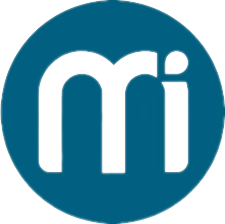IMA Network: Why Peer Communities Deliver More Than Social Media

Social media has become the default place for marketers to connect, share, and build visibility. But while these platforms are fast-moving and filled with activity, they often lack depth. Scrolling through updates may give surface-level insights, but it rarely builds the type of trust and collaboration needed for meaningful growth.
The strength of IMA Network lies in its ability to create genuine, peer-driven communities where professionals support one another, share real-world knowledge, and form long-lasting relationships. Unlike the crowded environment of social media, peer groups provide a structured space where marketers can focus on learning and collaboration without the noise.
Why Social Media Falls Short for Professionals
Social platforms are excellent for quick updates and broad exposure, but they have limits. The main challenge is the sheer volume of content, which makes it difficult to filter what is useful from what is irrelevant. Professionals often find themselves wasting time scrolling rather than gaining real knowledge.
Another limitation is the lack of trust. On social media, connections are shallow and often transactional. Many posts are designed for visibility rather than genuine value, which makes it harder to build professional credibility. In contrast, structured communities encourage thoughtful dialogue and hold members accountable for what they contribute.
How Peer Communities Create Value
Communities built around shared goals and experiences offer value in ways that social media cannot replicate. They provide a setting where professionals can connect in a more meaningful way and exchange ideas with people who understand their challenges.
-
Direct access to like-minded peers creates an environment of support. Unlike the randomness of social media feeds, peer groups connect you with people who face similar industry pressures and want to collaborate.
-
Knowledge shared within these groups is more reliable. Members contribute practical advice that comes from experience, rather than generic tips often seen online. This gives discussions more depth and practical value.
-
Opportunities for collaboration are stronger. Because members already share a common purpose, it is easier to move from introductions to partnerships that lead to measurable results.
Step 1: Define Your Role in the Community
Joining a peer network should not mean being a passive observer. The value you gain often depends on the effort you put in. Defining your role helps you maximize the benefits of membership.
-
Set clear intentions before engaging. Decide whether your priority is learning, networking, or finding collaborations. This clarity will guide your interactions.
-
Be consistent in your presence. Attending events, responding to discussions, and offering insights regularly shows commitment and helps build recognition among peers.
-
Position yourself as a contributor. Members respect those who give value, whether by answering questions or sharing useful resources. This creates visibility in a positive way.
Step 2: Take Advantage of Organized Events
Most associations and networks organize events designed for knowledge sharing and professional growth. These are powerful opportunities to deepen relationships and learn from experts.
-
Attend both large conferences and smaller sessions. Large gatherings provide exposure to industry trends, while smaller workshops allow for more personal conversations and deeper learning.
-
Use events as a chance to ask thoughtful questions. By doing so, you show engagement and create opportunities to start meaningful conversations with speakers or peers.
-
Follow up with people after events. A simple email or message can transform a brief interaction into an ongoing professional relationship.
Step 3: Share What You Know
A strong community relies on active contributions from its members. By sharing your own expertise, you establish credibility and encourage others to engage with you.
-
Post insights that come from direct experience. Sharing what worked and what didn’t helps others avoid mistakes and positions you as someone worth listening to.
-
Offer tools, templates, or resources that make others’ work easier. Practical contributions stand out and generate appreciation from the group.
-
Volunteer for speaking opportunities. Even short presentations or leading a discussion group can increase your profile and strengthen your reputation as a knowledgeable professional.
Step 4: Learn From the Community’s Resources
Peer groups often offer resources that are not available to the general public. These may include research reports, curated learning paths, or specialized training. Taking advantage of these ensures you continue to develop as a professional.
-
Use exclusive research studies to stay ahead of industry changes. These reports provide insights that go deeper than typical online articles and help shape smarter decisions.
-
Attend specialized training sessions. These are often more interactive and targeted, giving you the chance to practice skills rather than only hearing about them.
-
Engage with mentorship programs if available. Learning directly from experienced professionals accelerates growth in ways self-study cannot match.
Step 5: Build Authentic Relationships
One of the strongest differences between social media and peer communities is the ability to create genuine, long-term connections. Instead of chasing likes and shares, focus on building trust and mutual support.
-
Take time to listen to others. Showing genuine interest in someone’s challenges creates a stronger bond than delivering a sales pitch.
-
Offer help before asking for it. Helping others without expecting immediate returns builds goodwill and positions you as a valuable contact.
-
Stay connected through consistent communication. A message every few weeks or participation in ongoing discussions keeps your relationships alive and relevant.
Step 6: Use the Community to Support Career Goals
Every professional joins a network with goals in mind, whether it is skill development, career advancement, or business growth. Aligning your community activity with these goals ensures the time you invest delivers results.
-
Identify skills you want to develop and look for opportunities to practice them within the group.
-
Set measurable outcomes such as new connections, collaborations, or certifications earned. This helps track progress and keeps motivation high.
-
Reassess periodically whether the community is helping you meet your objectives. If not, adjust your approach to participation.
Why Peer Networks Outperform Social Media
The difference between peer groups and social platforms becomes clear when looking at outcomes. Social media may give visibility, but peer communities generate actionable value. Members of structured groups often report more collaborations, deeper learning, and stronger trust with their connections. This is because the focus is on quality, not quantity.
Peer groups provide accountability, something social media lacks. When you engage in a community, your contributions are noticed and remembered. This environment pushes members to bring value, which raises the overall quality of interactions.
Conclusion
Communities that prioritize learning, collaboration, and genuine relationships will always deliver more than the fleeting connections of social media. By setting clear goals, contributing consistently, and engaging with the opportunities provided, professionals can unlock real benefits that extend far beyond visibility. The structured, supportive environment of peer groups makes them a long-term asset in any marketer’s journey. The growing influence of IMPACT SHOW demonstrates how dedicated gatherings and communities can turn shared knowledge into lasting business results and career growth.
- Art
- Causes
- Crafts
- Dance
- Drinks
- Film
- Fitness
- Food
- Games
- Gardening
- Health
- Home
- Literature
- Music
- Networking
- Other
- Party
- Religion
- Shopping
- Sports
- Theater
- Wellness


